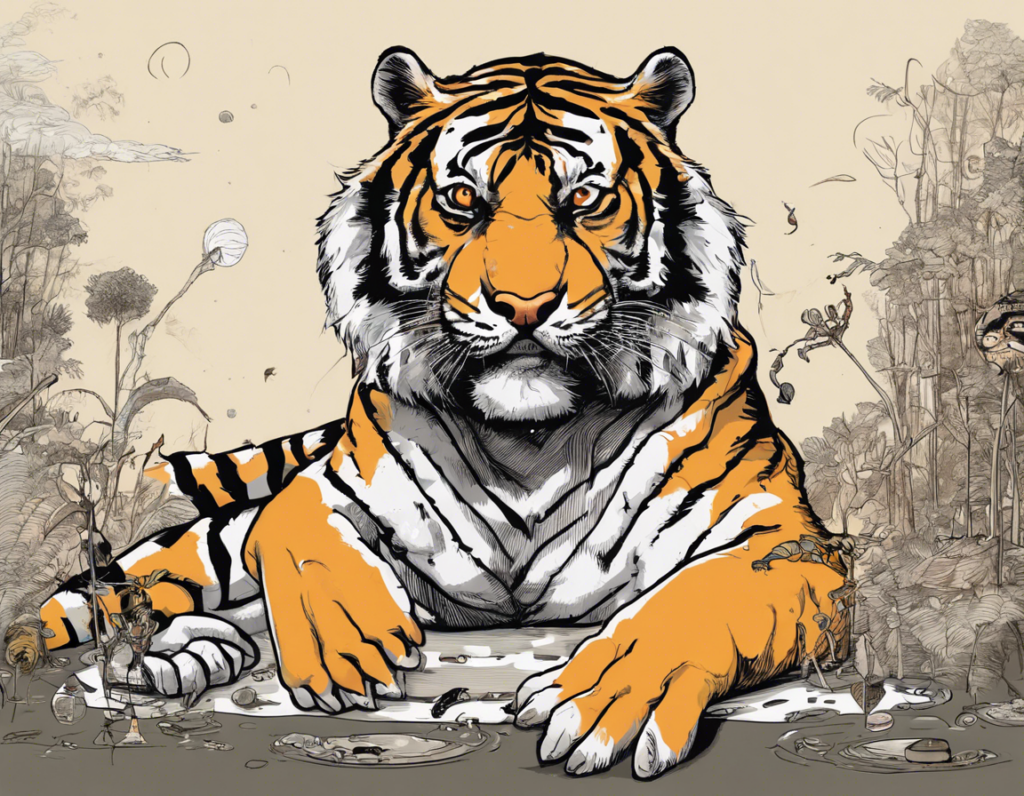The tiger — a symbol of power, ferocity, and grace. This majestic feline has captivated human fascination for centuries, representing both fear and admiration. From ancient mythologies to modern conservation efforts, the tiger’s presence looms large in our collective consciousness. In this blog post, we delve into the command of the tiger and explore the various facets that contribute to its unparalleled majesty.
Understanding the Tiger
The tiger, scientifically known as Panthera tigris, is the largest cat species on the planet. With its distinctive orange coat, black stripes, and piercing eyes, the tiger is instantly recognizable. There are several subspecies of tigers, including the Bengal tiger, Siberian tiger, Sumatran tiger, and South China tiger, each adapted to its specific habitat.
Habitat and Behavior
Tigers are primarily found in Asia, inhabiting a range of ecosystems from tropical forests to snow-covered landscapes. These solitary predators are known for their stealth and agility, capable of taking down prey much larger than themselves. Tigers are also excellent swimmers, often traversing rivers and lakes in search of food.
Conservation Status
Despite their formidable reputation, tigers are facing severe threats to their survival. Habitat loss, poaching, and human-wildlife conflict have significantly impacted tiger populations worldwide. Conservation efforts, such as protected reserves and anti-poaching measures, are critical in safeguarding these magnificent creatures for future generations.
The Symbolism of the Tiger
In many cultures, the tiger holds symbolic significance beyond its physical presence. Here are some common themes associated with the tiger:
Strength and Power
The tiger is often seen as a symbol of strength and power, representing courage and determination. In Chinese mythology, the tiger is one of the four celestial animals and embodies the qualities of bravery and protection.
Leadership and Authority
Due to its position at the top of the food chain, the tiger is viewed as a natural leader in the animal kingdom. Its commanding presence and territorial nature make it a potent symbol of authority and command.
Spirituality and Transformation
In some traditions, the tiger is associated with spirituality and transformation. The concept of the tiger spirit guides individuals through challenges, urging them to embrace change and emerge stronger on the other side.
Tiger Conservation Efforts
As human activities continue to encroach upon the tiger’s habitat, conservationists are working tirelessly to ensure the survival of this iconic species. Here are some key conservation efforts aimed at protecting tigers:
- Habitat Preservation: Establishing protected areas and wildlife reserves to safeguard critical tiger habitats.
- Anti-Poaching Measures: Implementing strict laws and enforcement to combat illegal poaching of tigers for their skins and body parts.
- Community Engagement: Involving local communities in conservation initiatives to reduce human-wildlife conflict and promote coexistence.
- Research and Monitoring: Conducting scientific studies to understand tiger behavior, population dynamics, and ecological needs.
- Awareness Campaigns: Educating the public about the importance of tiger conservation and the role each individual can play in saving these magnificent animals.
FAQs about Tigers
1. Why are tigers endangered?
Tigers are endangered due to habitat loss, poaching for illegal wildlife trade, and human-wildlife conflict. These factors have led to a drastic decline in tiger populations globally.
2. How many tigers are left in the wild?
According to recent estimates, there are around 3,900 tigers left in the wild, spread across various countries in Asia.
3. What is the biggest threat to tiger conservation?
Poaching remains the biggest threat to tiger conservation, driven by the demand for tiger parts in traditional medicine and the illegal wildlife trade.
4. How can individuals help in tiger conservation?
Individuals can support tiger conservation by avoiding products made from tiger parts, supporting reputable conservation organizations, spreading awareness about tiger conservation issues, and advocating for strong wildlife protection laws.
5. What is the role of zoos in tiger conservation?
Zoos play a crucial role in tiger conservation through captive breeding programs, research, and education. By maintaining genetically diverse tiger populations in captivity, zoos help ensure the long-term survival of the species.
In conclusion, the command of the tiger extends far beyond its physical prowess. As symbols of strength, power, and resilience, tigers embody the essence of majesty in the natural world. By understanding and honoring these magnificent creatures, we can work together to ensure a future where tigers continue to roam the forests and inspire awe in generations to come.
